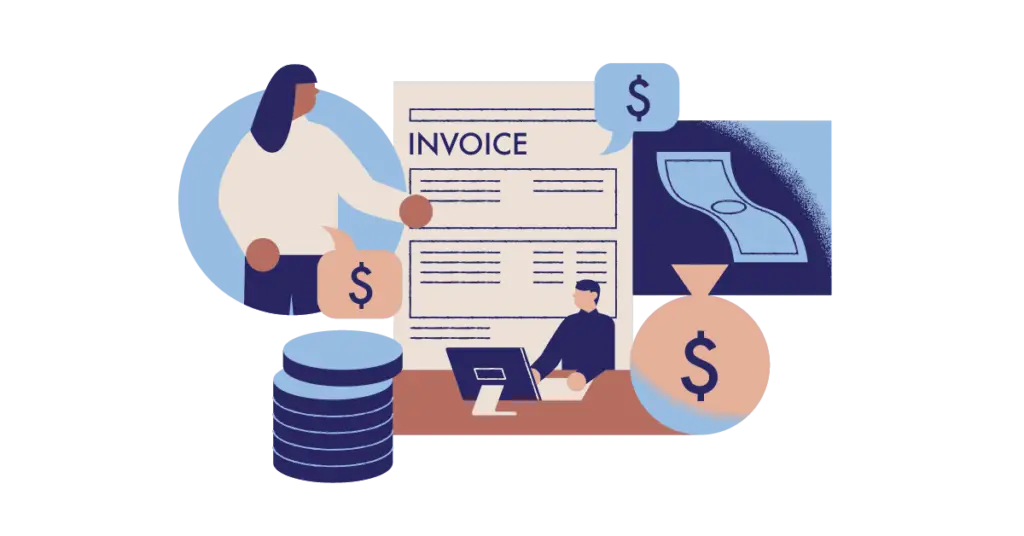Best Accounting Software for E-commerce Business in 2024

Running a successful e-commerce business involves more than just selling products online. Efficiently managing your finances is crucial for growth and profitability. That’s where the right accounting software comes into play. In this guide, we’ll delve into the best accounting software solutions for e-commerce businesses in 2024, comparing Vencru, Quickbooks, Xero, and Bench to help […]
What Are Debits and Credits in Accounting?

In accounting, debits and credits form the backbone of the entire financial recording system. Accountants use these fundamental concepts to track and report each business transaction, which ultimately feeds into financial statements. Every single transaction impacts at least two accounts, ensuring that the books remain balanced through the Double-Entry Bookkeeping System. With modern advancements, cloud-based […]
Zoho Books/ Zoho Inventory Alternative

Managing your business finances and inventory effectively is crucial for success. Zoho Books and Zoho Inventory are popular tools that offer comprehensive solutions for accounting and inventory management. However, they may not fit every business’s unique needs. This article explores why you might seek alternatives and presents the best options. In this blog, we’ll be […]
Proforma Invoice vs. Commercial Invoice: What’s the Difference?

Introduction Invoices play a pivotal role in documenting the exchange of goods and services. Two types of invoices that often create confusion are proforma invoices and commercial invoices. While both serve as vital financial documents, they serve different purposes and come into play at different transaction stages. This comprehensive guide will review proforma vs commercial […]
Cash Basis Accounting vs. Accrual Basis Accounting

When it comes to managing your business’s financial records, choosing the right accounting method is crucial. The two most commonly used methods are cash basis accounting and accrual basis accounting. Each has its own set of benefits, limitations, and implications for your financial reporting and decision-making process. In this blog, we’ll take a deep dive […]
Understanding the Expanded Accounting Equation Principle

In the realm of accounting, understanding the underlying principles is crucial for accurately recording financial transactions and maintaining a clear picture of a business’s financial health. One foundational concept is the accounting equation, which serves as the bedrock of financial accounting and reporting. This equation, in its basic and expanded forms, provides insights into how […]
What is Takt Time?

In today’s fast-paced manufacturing environment, meeting customer demand without overproducing or underutilizing resources is a challenge that many businesses face. One key concept that helps solve this problem is takt time. Derived from the German word for “beat” or “rhythm,” takt time sets the pace for production, ensuring that goods are produced at the right […]
Separating Business and Personal Finances

Managing finances can be challenging for entrepreneurs, especially when personal and business funds become entangled. While it may seem convenient to use a single account for everything, this approach can lead to significant problems. Separating personal and business finances is essential for maintaining clear records, ensuring legal protection, and managing tax obligations. In this blog, […]
FIFO vs. LIFO Method

When managing inventory, accounting professionals typically use two primary methods: FIFO (First In, First Out) and LIFO (Last In, First Out). These methods serve as the backbone for determining the cost of inventory and directly impact profitability, taxes, and financial reporting. While FIFO is often preferred due to its adherence to common consumption patterns, LIFO […]
How to Calculate FIFO Cost of Goods Sold

Accurately calculating the Cost of Goods Sold (COGS) is crucial for any business that deals with inventory. The FIFO (First In, First Out) method is one of the most widely used inventory valuation methods, and it plays a significant role in determining COGS. In this blog, we’ll explore how to calculate FIFO COGS, compare it […]


